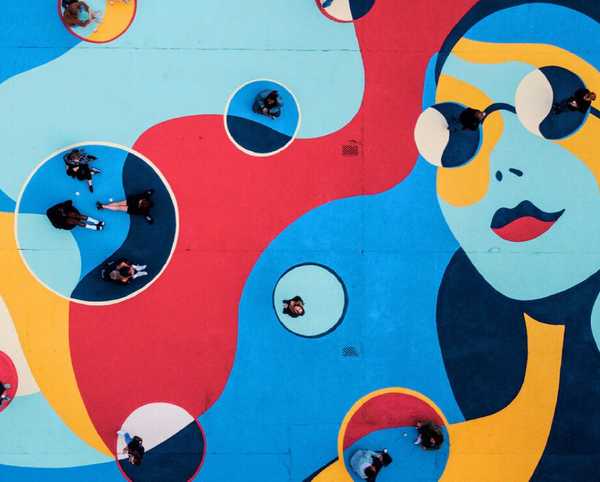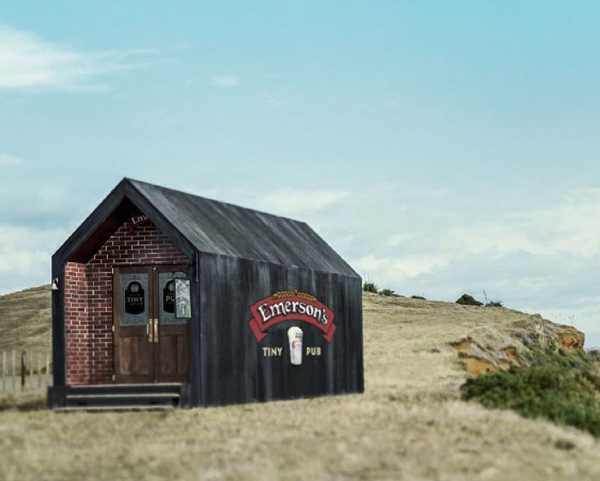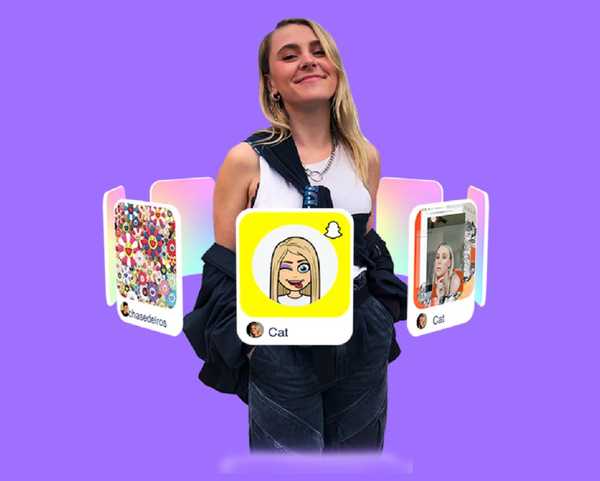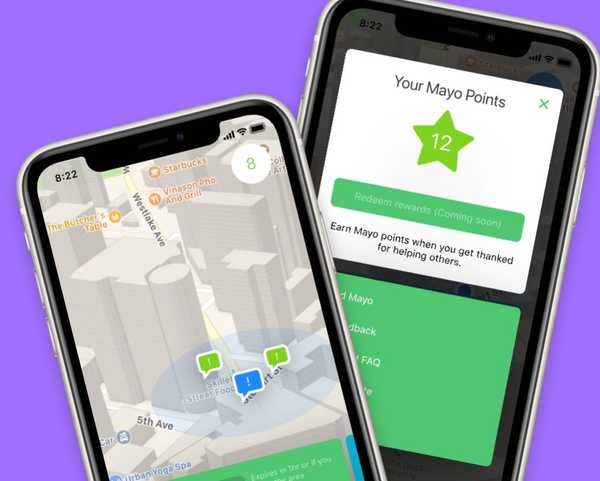What is
 ?
?
A brand-new, monthly briefing to help you navigate this wild New Normal. We’ll be covering the trends no brand can afford to ignore...but that’s not all. Every issue includes exercises and prompts to get your team innovating: Making shifts & making sh*t happen!
Balancing social life with staying alive.
Six feet apart. Masks on. Hands off! Your brand knows the basic rules, consumers know the rules, and the adverse impacts of social distancing rules — depression, boredom, that feeling of being disconnected — have been documented to death. But not everyone is laser-focused on what we’ve lost in our interactions. Some brands are using physical and tech solutions (or a blend of the two!) to unlock new dimensions of the human experience. Our goal? To help your brand roll out innovations that are Hands Off...But Human! That not only consider health but also — and here’s the ultimate challenge — make our social lives even better and more meaningful than they were before.
Right now, businesses and public spaces globally are celebrating their (re)opening days. So are consumers — they’ve been waiting for this. What’s number one on their post-lockdown list, by a long shot? Connecting with friends and family.
For its Silver Linings report, Valuegraphics gave a sample size of the US population one vote (just one!) on the activity they’d like to resume when isolation measures are lifted; 57% chose to spend time or speak with loved ones.
Consumers are finally getting their social outings, but things of course aren’t as they were. The New Normal spurred some New (social) Norms, as social distancing and our global sense of wariness shifted our connections and interactions significantly. Fun facts:
To keep consumers' hands off each other, institutions are getting hands-on. The Emily Post Institute for etiquette reversed its age-old guidelines on handshakes (nice to meet you, elbow bumps!), while the French government cautioned against cheek kissing.
Speaking of kissing: What’s the status of romantic relationships? We’d say...it’s complicated.
Take China: In March, the government of Xi’an was so overwhelmed with divorce requests that it passed a law requiring couples to enter a 30-day ‘cooling off’ period before divorcing. Yet in Wuhan, there was a 300% rise in marriage applications after the lockdown that crashed the city’s software.
Overall, COVID restrictions prompted consumers to reflect on how they are (or aren’t) meeting their fundamental, human need for connection. Which some organizations addressed by creating entirely virtual spaces for consumers to gather in.
Two examples? Traditional experiences like Finland’s annual May Day party and visiting your local Japanese hot spring were resurrected in VR.
Yet in terms of helping consumers truly bond...experiences that are 100% digital are generally no substitute for in-person meetups.
One reason? 55% of emotional expression is nonverbal; body language, facial expressions, and the like are significantly harder to gauge in virtual spaces or video calls.
And about those video calls: They’re overstimulating and exhausting. That Zoom fatigue you’re feeling is real.
One side note: You know the theory floating around — that COVID-19 made us so much lonelier? Debunked!
Multiple studies found that the pandemic has actually made US consumers feel more resilient and more supported by their peers.
Now, there’s momentum behind innovations that help consumers show each other that support...and fuel exciting, meaningful yet (most importantly) safe social connections.
Some of these products, services, experiences and campaigns are enhancing in-person experiences. Others are blending IRL experiences with tech to add a surprising yet impactful dimension onto everyday interactions. All to change what ‘the meetup’ itself even looks like!
Whether they’re strictly physical, strictly digital, or phygital, the most compelling Hands Off...But Human innovations are giving people powerful new means of forging bonds during trying times.
What does a tricked-out face mask have to do with a funky floor mural? Or an AR social network with a tiny pub? The common thread running through all the following innovations is that they keep consumers socially distanced and socially engaged with one another – all via clever, unexpected means. Let these BRANDS IN ACTION inspire your organization’s move to craft Hands Off...But Human experiences, and keep reading to jumpstart your team brainstorm.
1.
Donut Robotics
JP
Smart mask can translate speech into eight languages
This mask lets wearers connect with people they might not have interacted with – those speaking an entirely different language – pre-COVID. Can tech help unlock a new experience?
Japan-based Donut Robotics’ C-FACE face mask can translate Japanese into eight languages. C-FACE, which fits over standard face masks, uses wifi and Bluetooth to transcribe voice to text via an app. The USD 40 mask can also amplify a user’s voice so it can easily be heard while wearing a mask. Following a successful crowdfunding campaign, the first masks will be shipped to Japan in September 2020, with future plans to ship internationally.
2.
Tinder
US
Dating app allows users to remove geographical filters
Even while social distancing, Tinder daters kept on swiping: there were more swipes on March 29th than on any single day in the history of Tinder. Why restrict those connections to the local vicinity?
May 2020 saw Tinder test Global Mode: a free, opt-in feature that allows a dater’s profile to show up around the world. Any user can now match with individuals who live in other countries, not just their own city or state. This expands upon the dating app’s premium feature, Passport, that lets daters pick a location and match with local users. Following apps like Bumble, Tinder also introduced face-to-face video calls.
3.
Stella Artois
UK
On-the-ground street art helps patrons keep their distance
What if public spaces could be adapted to make social distancing not only easy...but something that enhances the overall experience? This artist collaboration does just that – and looks good on Insta!
To help patrons observe social distancing rules, beer brand Stella Artois installed a large floor mural at London’s Old Truman Brewery in July 2020. The artwork, developed in partnership with Studio Number One, used shapes and contrasting colors to help visitors stay at a safe distance. The designs developed for the ‘Together Apart Street Art’ project were shared with 1,000 pubs and bars across the UK.
4.
Emersons
NZ
A tiny pop-up bar where patrons can socialize safely after lockdown
Emerson’s is resurrecting the good ol’ (pre-pandemic) era of the pop-up. Could you create a novel, in-person experience people crave – that also adheres to health guidelines?
New Zealand-based beer brand Emerson’s launched Tiny Pub: a pop-up bar with space for two patrons, a bartender, and a very small piano. The bar, created to help people socialize safely as lockdown measures eased across the country, could be booked for 27 minutes – just long enough to enjoy a beer, according to the brand. Tiny Pub toured for a week in July 2020; all time slots were booked within 48 hours of launch.
5.
Octi
US
AR social network enhances real-life interactions
When innovating with tech, keep your user’s core, human needs front and center. Octi accomplishes this by adding a distanced-yet-playful layer to IRL meetups.
6.
Mayo
US
App helps local people help each other
With consumers largely stuck at home, COVD-19 brought a renewed focus on ‘local’. Bringing people together through small acts of kindness could be one way to build stronger communities…
Relaunched in the US in May 2020, Mayo allows people to ask for and offer help to neighbors. Users can request help (for example, a grocery delivery), and people nearby have one hour to reply within the app. During the pandemic, Mayo partnered with the Seattle-based Heroic Together community to offer assistance and share hard-to-find items like masks and toilet paper.
7.
UPE
US
Scheme encourages white people to send ‘reparation plants’
A moment of cheer amidst pandemic woes, racial tensions, climate concerns and more! Can your initiative bring people together to tackle social issues, offer relief, or share knowledge?
The Underground Plant Exchange, encouraging white people to send black people plants, was created by US-based DJ Freedem in June 2020. The idea, which originated as a tweet, quickly gained traction on Instagram. Users can comment on posts that match their US location. They can request or offer plants, while arranging drop-offs and deliveries. DJ Freedem described the initiative as a space ‘where black people come to collect their reparation plant.’
We’re not kidding when we say we want to get your brand making shifts and making sh*t happen! That’s why we created a handy checklist to kickstart your ideation session around Hands Off...But Human. So get your team on a call, explore each point and exercise, and check them off when you’re done.
Happy innovating!
The hassle of traveling today — the pre-flight COVID tests, the struggle to snag seats on the few flights taking place — mean consumers will stay largely in place. Which opens up opportunities to create Hands-Off...But Human experiences that resonate on a deeper level.
Is there a fresh, surprising layer you can add to consumers’ typical activities in their city or town? Get inspired by how Stella Artois’ ground murals may help 1,000 UK pubs strike a balance between hygienic and social experiences.
On the other hand, some consumers are feeling stuck. Can you offer something to take them out of their local zone — perhaps not physically, but via tech? Look at Tinder’s update, removing geographic borders from users’ search for love, as an example.
You’ve probably got your purpose-beyond-profit down pat. But you can still find new ways to interpret your brand’s mission. How about exploring it through the lens of connection?
Think about your team-to-customer relationships. Who do people want to connect with inside your brand? Your in-house product experts? Those heading up your charitable initiatives? Or anyone (regardless of job title) who could empathize with a situation your customer is facing? Think broadly!
Now, think customer-to-customer. What do your customers have in common (besides the fact they’re...all your customers)? Could you set up a space for them to meet and support one another? See how WaterWipes’ virtual community lets new parents advise each other on raising an infant amidst COVID craziness.
If you’re entering digital/phygital territory...select your tech wisely. Yes, we’re a trend firm, but we urge you not to choose based on what’s ‘on-trend’. Instead, root your decision in a deep, human need like connection. That’s what creates a game changer as opposed to a gimmick.
Contemplate how you want your customer and their peers to feel when interacting with your innovation. Is tech — AR, VR, a wearable — needed to make that happen? Or...could you create an equally compelling experience without it?
People yelling at each other on the street, or in ALL CAPS on Twitter...the divides between us (racial, political, national) are of course expressed both off- and online. Meaning any efforts to bridge those divides should blend off- and online elements.
The Underground Plant Exchange is a textbook example: The movement helped white participants connect with black participants on social media and via bringing them plants, in-person.
How can you build ‘phygital’ communities to tackle inequality? What kinds of productive conversations could you start?
The events of 2020 are giving us a chance to press reset. How can we improve the way we interact with each other in the future? How can the changes we make today get ‘us’ there?
For 20 minutes, put your space goggles on and become a futurist. Brainstorm ideas that might seem ridiculous today, but could become mainstream tomorrow. Or, evaluate existing ‘out there’ innovations; exploring crowdfunding campaigns (like Sentero, a wearable letting you ‘feel’ distant people and places) is a great way to start.
Our team has a saying: Tracking trends is useless unless you apply them.That’s why we want your team to create new products, services, experiences, and campaigns rooted in Hands Off...But Human – ASAP! Here’s what to do:
Step 1: Share this edition of Make→Shift with your team! We’ve given you so many ways to do it (you’re welcome!): via LinkedIn, Facebook, email, WhatsApp, you name it. Click the buttons below to share!
Step 2: Get everyone on a video call for an innovation workshop. Discuss the five prompts above. Most importantly, begin innovating! Good luck!
Talk to us
We want to hear from you. Did anything in this issue spark an action or change in you or your organization’s objectives?
Get in touch with us at crew@trendwatching.com.
Make→Shift has many hands in it, including:
Words
Lisa Feierstein, Vicki Loomes and Thomas Klaffke
Design & Direction
Zuzanna Loch, Nikki Ritmeijer, Clara Olsen and Stephen Warr
With thanks to our community and all purpose-driven individuals and organizations worldwide.
Here's the opportunities you may have missed.






